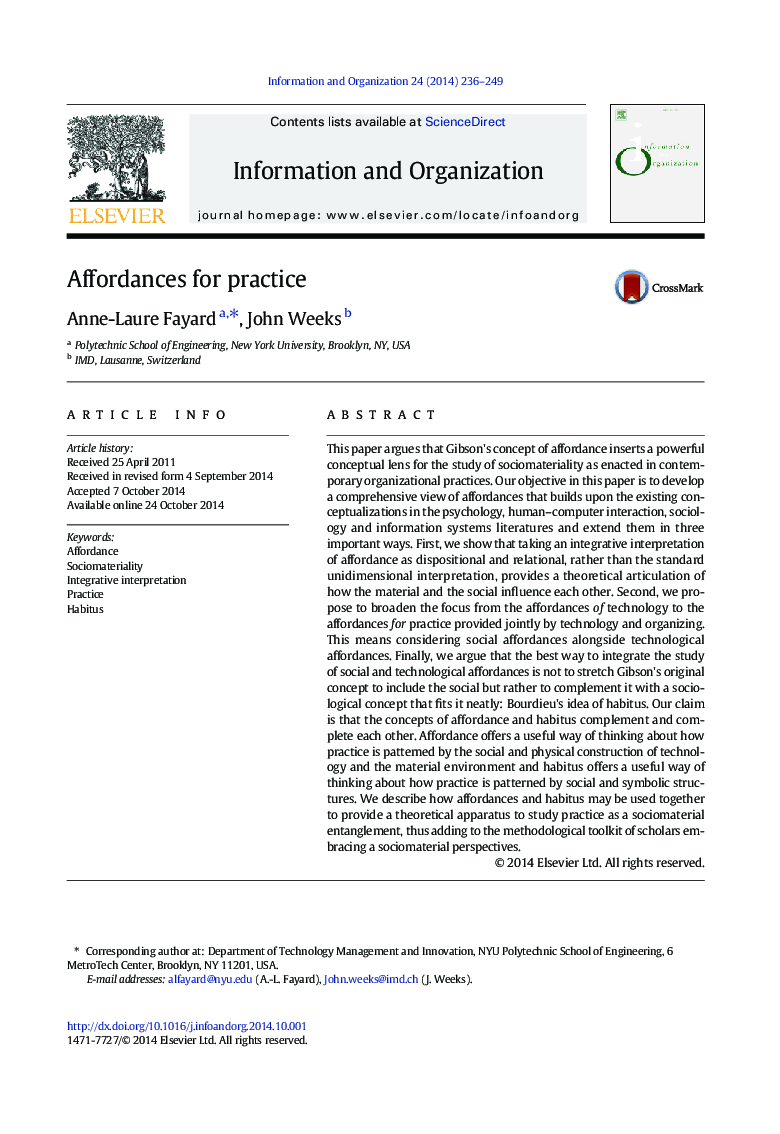| Article ID | Journal | Published Year | Pages | File Type |
|---|---|---|---|---|
| 556657 | Information and Organization | 2014 | 14 Pages |
•This paper suggests that Gibson's concept of affordance can provide a powerful conceptual lens for the study of sociomateriality as enacted in contemporary organizational practices.•It proposes, instead of the usual unidimensional interpretation, a dualistic interpretation of affordance, as both dispositional and relationg.•It complements the concept of affordance with Boudieu’s concept of habitus for a full understanding of social and technological affordances.
This paper argues that Gibson's concept of affordance inserts a powerful conceptual lens for the study of sociomateriality as enacted in contemporary organizational practices. Our objective in this paper is to develop a comprehensive view of affordances that builds upon the existing conceptualizations in the psychology, human–computer interaction, sociology and information systems literatures and extend them in three important ways. First, we show that taking an integrative interpretation of affordance as dispositional and relational, rather than the standard unidimensional interpretation, provides a theoretical articulation of how the material and the social influence each other. Second, we propose to broaden the focus from the affordances of technology to the affordances for practice provided jointly by technology and organizing. This means considering social affordances alongside technological affordances. Finally, we argue that the best way to integrate the study of social and technological affordances is not to stretch Gibson's original concept to include the social but rather to complement it with a sociological concept that fits it neatly: Bourdieu's idea of habitus. Our claim is that the concepts of affordance and habitus complement and complete each other. Affordance offers a useful way of thinking about how practice is patterned by the social and physical construction of technology and the material environment and habitus offers a useful way of thinking about how practice is patterned by social and symbolic structures. We describe how affordances and habitus may be used together to provide a theoretical apparatus to study practice as a sociomaterial entanglement, thus adding to the methodological toolkit of scholars embracing a sociomaterial perspectives.
